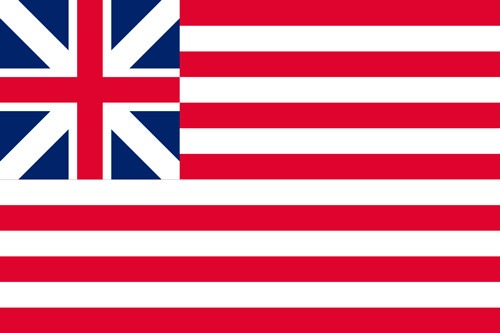It was a turning point in the war. George Washington had just crossed the Delaware River, capturing the town of Trenton from British-allied German forces and defending the town against a counterattack led by the Lieutenant General Charles Cornwallis in the dawning days of 1777.
It was that summer when the Continental Congress adopted the official stars and stripes of America, signing the official resolution on June 14 to accept the red, white and blue colors as the flag of the new country.
But it would be another 172 years before President Harry Truman would officially declare June 14 as Flag Day in the U.S. on Aug. 3, 1949, and between the early years of the revolutionary war and the height of the second Red Scare, Old Glory went through many changes before becoming what we see today.
Early years
Even before the Continental Congress officially accepted an early variation of the stars and stripes, revolutionary troops hoisted similar colors in battle.
Known as the Congress Colors or the Grand Union Flag, it had 13 red and white alternating stripes to represent the 13 colonies.
Instead of stars in the corner on a blue field, though, the flag wore the Union flag of England, with the red cross of St. George of England and the white cross of St. Andrew of Scotland.
The stars replaced the Union Flag when Congress adopted the official flag in 1777.
“The flag of the United States be thirteen stripes, alternate red and white,” the resolution read, “and that the union be thirteen stars, white in a blue field representing a new constellation.”
However, the resolution did not specify how the stars were to be arranged, so many flags had different patterns of stars during those early years.
Some flags had no pattern for the stars, while others were already being arranged into rows.
One of the most recognizable early flags, though, is the Betsy Ross flag, known for arranging the 13 stars in a circle.
Although Betsy Ross is credited with making the first American flag, historians claim her version of the American flag didn’t appear until the early 1790s.
However, it is also known Betsy Ross made flags for the Pennsylvania state Navy in 1777.
The claim that Betsy Ross made the first flag started in 1870 by one of her grandsons, who was certain he remembered Congress approaching his grandmother to make a flag from a design George Washington himself drew in their back parlor.
When Kentucky and Vermont were brought into the Union, another resolution was passed by Congress to expand the flag to 15 stripes and 15 stars.
It was this flag that Francis Scott Key saw when he wrote, “The Star-Spangled Banner” in 1814.
In 1818, President James Monroe signed a bill reducing the number of stripes back to 13 to represent the original colonies.
The bill also increased the number of stars to 20, and a new star would be added on the Fourth of July every year a new state was admitted into the Union.
When Hawaii joined the U.S. as the 50th state in 1960, the flag we are familiar with now was first raised on July 4, 1960 at 12:01 a.m.
The flag of the future
When Puerto Rico supported a nonbinding referendum to become America’s 51st state in 2012, many people realized some major changes may need to happen to the nation’s flag in order to incorporate a new star if the U.S. were to accept Puerto Rico into the Union.
Although no official effort by the U.S. government has been made to research a new flag pattern,many social media users took it upon themselves to come up with their own unique mock-up designs.
As the flag is now, there are five horizontal rows of six stars and four horizontal rows of five stars in an alternating pattern.
One of the more simple flag mock-ups changes this to three horizontal rows of nine stars alternating with three rows of eight stars, totaling 51 stars.
A more artful and nostalgic mock-up, perhaps drawing inspiration from Betsy Ross, places the stars in concentric circles, with the outside edge consisting of 20 stars, the next circle 15 stars, then 10, five, and a lone star filling the middle.
Another flag mock-up keeps the star design the flag currently wears, but adds a 51st star to the middle row, extending the traditionally rectangular blue field with a small blue triangle that encroaches on the 3rd, 4th and 5th stripes of the flag.
Fancier mock-ups include arranging the 51 stars in overlapping diamond shapes, forming star patterns and even playing with the sizes of the stars, forming a rectangle of 50 smaller stars with one larger star in the center.
Reach Ray Still at rstill@courierherald.com or 360-825-2555 ext. 5058. Follow him on Twitte r@rayscottstill for more news, pictures and local events.


